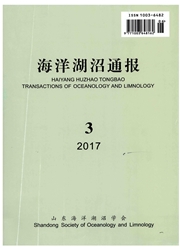

 中文摘要:
中文摘要:
沼泽湿地土壤是氮的重要储库,发挥着源、汇和转化器的重要功能。湿地土壤中无机氮的物理运移不但影响着植物的养分供给状况,而且其对于湿地生态系统的结构、功能及健康状况等也有着深刻影响。综述了沼泽湿地土壤无机氮物理运移及影响因素的研究动态。当前湿地土壤无机氮物理运移的研究主要集中在硝态氮和铵态氮(特别是硝态氮)物理运移规律及部分影响因素(如水分条件、土壤物理性质等)的探讨上,缺乏无机氮物理运移的动力学、热力学机制与模型表征研究。鉴于当前研究中存在的问题,指出天然沼泽湿地是研究的薄弱点,其在今后应亟需加强的领域包括:①无机氮物理运移的驱动机制;②动力学、热力学与环境效应模型表征;③人类活动和全球变化对无机氮物理运移的影响。
 英文摘要:
英文摘要:
Mire wetland soil is the important storage of nitrogen,which serves as the function of source,sink or transformation.The physical transport of inorganic nitrogen(IOR-N) in wetland soil not only influences the nutrient supply status of plant,but also significantly influences the structure,function,and health status of wetland ecosystem.In this paper,the study trends of IOR-N physical transport and its affecting factors are summarized.The current studies of IOR-N physical transport mainly focus on nitrate nitrogen(NO3——N) and ammonium nitrogen(NH4+——N),especially NH4+——N,transport rules and some affecting factors(such as water condition,soil physical or chemical properties etc.),and the relative studies about the kinetics or thermodynamics mechanism and model representation of IOR-N physical transport are even scarce.Finally,the issues existed in current researches are analyzed in the paper,and which points that,the study of natural mire wetland is very weak,and the research fields that needed to be strengthened for the future,mainly include,①Driving mechanism of IOR-N physical transport,②Representation of kinetics,thermodynamics and environmental effects models,③Effects of human activities and global changing on the physical transport of IOR-N.
 同期刊论文项目
同期刊论文项目
 同项目期刊论文
同项目期刊论文
 Nitrogen biological cycle of the typical Suaeda salsa marsh ecosystem in the tidal marsh of the Yell
Nitrogen biological cycle of the typical Suaeda salsa marsh ecosystem in the tidal marsh of the Yell Nitrogen Biological cycle characteristics of seepweed (Suaeda salsa) wetland in intertidal zone of H
Nitrogen Biological cycle characteristics of seepweed (Suaeda salsa) wetland in intertidal zone of H Effects of flooding regimes on the decomposition and nutrient dynamics of Calamagrostis angustifolia
Effects of flooding regimes on the decomposition and nutrient dynamics of Calamagrostis angustifolia 期刊信息
期刊信息
